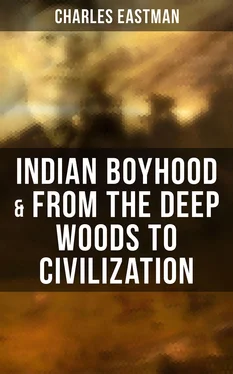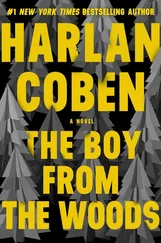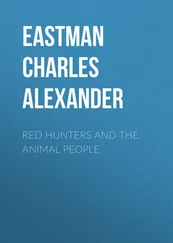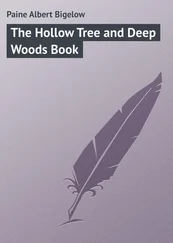She has told me that when I had grown old enough to take notice, I was apparently capable of holding extended conversations in an unknown dialect with birds and red squirrels. Once I fell asleep in my cradle, suspended five or six feet from the ground, while Uncheedah was some distance away, gathering birch bark for a canoe. A squirrel had found it convenient to come upon the bow of my cradle and nibble his hickory nut, until he awoke me by dropping the crumbs of his meal. My disapproval of his intrusion was so decided that he had to take a sudden and quick flight to another bough, and from there he began to pour out his wrath upon me, while I continued my objections to his presence so audibly that Uncheedah soon came to my rescue, and compelled the bold intruder to go away. It was a common thing for birds to alight on my cradle in the woods.
My food was, at first, a troublesome question for my kind foster-mother. She cooked some wild rice and strained it, and mixed it with broth made from choice venison. She also pounded dried venison almost to a flour, and kept it in water till the nourishing juices were extracted, then mixed with it some pounded maize, which was browned before pounding. This soup of wild rice, pounded venison and maize was my main-stay. But soon my teeth came—much earlier than the white children usually cut theirs; and then my good nurse gave me a little more varied food, and I did all my own grinding.
After I left my cradle, I almost walked away from it, she told me. She then began calling my attention to natural objects. Whenever I heard the song of a bird, she would tell me what bird it came from, something after this fashion:
“Hakadah, listen to Shechoka (the robin) calling his mate. He says he has just found something good to eat.” Or “Listen to Oopehanska (the thrush); he is singing for his little wife. He will sing his best.” When in the evening the whippoorwill started his song with vim, no further than a stone’s throw from our tent in the woods, she would say to me:
“Hush! It may be an Ojibway scout!”
Again, when I waked at midnight, she would say:
“Do not cry! Hinakaga (the owl) is watching you from the tree-top.”
I usually covered up my head, for I had perfect faith in my grandmother’s admonitions, and she had given me a dreadful idea of this bird. It was one of her legends that a little boy was once standing just outside of the teepee (tent), crying vigorously for his mother, when Hinakaga swooped down in the darkness and carried the poor little fellow up into the trees. It was well known that the hoot of the owl was commonly imitated by Indian scouts when on the war-path. There had been dreadful massacres immediately following this call. Therefore it was deemed wise to impress the sound early upon the mind of the child.
Indian children were trained so that they hardly ever cried much in the night. This was very expedient and necessary in their exposed life. In my infancy it was my grandmother’s custom to put me to sleep, as she said, with the birds, and to waken me with them, until it became a habit. She did this with an object in view. An Indian must always rise early. In the first place, as a hunter, he finds his game best at daybreak. Secondly, other tribes, when on the war-path, usually make their attack very early in the morning. Even when our people are moving about leisurely, we like to rise before daybreak, in order to travel when the air is cool, and unobserved, perchance, by our enemies.
As a little child, it was instilled into me to be silent and reticent. This was one of the most important traits to form in the character of the Indian. As a hunter and warrior it was considered absolutely necessary to him, and was thought to lay the foundations of patience and self-control. There are times when boisterous mirth is indulged in by our people, but the rule is gravity and decorum.
After all, my babyhood was full of interest and the beginnings of life’s realities. The spirit of daring was already whispered into my ears. The value of the eagle feather as worn by the warrior had caught my eye. One day, when I was left alone, at scarcely two years of age, I took my uncle’s war bonnet and plucked out all its eagle feathers to decorate my dog and myself. So soon the life that was about me had made its impress, and already I desired intensely to comply with all of its demands.
Table of Contents
One of the earliest recollections of my adventurous childhood is the ride I had on a pony’s side. I was passive in the whole matter. A little girl cousin of mine was put in a bag and suspended from the horn of an Indian saddle; but her weight must be balanced or the saddle would not remain on the animal’s back. Accordingly, I was put into another sack and made to keep the saddle and the girl in position! I did not object at all, for I had a very pleasant game of peek-aboo with the little girl, until we came to a big snow-drift, where the poor beast was stuck fast and began to lie down. Then it was not so nice!
This was the convenient and primitive way in which some mothers packed their children for winter journeys. However cold the weather might be, the inmate of the fur-lined sack was usually very comfortable—at least I used to think so. I believe I was accustomed to all the precarious Indian conveyances, and, as a boy, I enjoyed the dog-travaux ride as much as any. The travaux consisted of a set of rawhide strips securely lashed to the tent-poles, which were harnessed to the sides of the animal as if he stood between shafts, while the free ends were allowed to drag on the ground. Both ponies and large dogs were used as beasts of burden, and they carried in this way the smaller children as well as the baggage.
This mode of travelling for children was possible only in the summer, and as the dogs were sometimes unreliable, the little ones were exposed to a certain amount of danger. For instance, whenever a train of dogs had been travelling for a long time, almost perishing with the heat and their heavy loads, a glimpse of water would cause them to forget all their responsibilities. Some of them, in spite of the screams of the women, would swim with their burdens into the cooling stream, and I was thus, on more than one occasion, made to partake of an unwilling bath.
I was a little over four years old at the time of the “Sioux massacre” in Minnesota. In the general turmoil, we took flight into British Columbia, and the journey is still vividly remembered by all our family. A yoke of oxen and a lumber-wagon were taken from some white farmer and brought home for our conveyance.
How delighted I was when I learned that we were to ride behind those wise-looking animals and in that gorgeously painted wagon! It seemed almost like a living creature to me, this new vehicle with four legs, and the more so when we got out of axle-grease and the wheels went along squealing like pigs!
The boys found a great deal of innocent fun in jumping from the high wagon while the oxen were leisurely moving along. My elder brothers soon became experts. At last, I mustered up courage enough to join them in this sport. I was sure they stepped on the wheel, so I cautiously placed my moccasined foot upon it. Alas! before I could realize what had happened, I was under the wheels, and had it not been for the neighbor immediately behind us, I might have been run over by the next team as well.
This was my first experience with a civilized vehicle. I cried out all possible reproaches on the white man’s team and concluded that a dog-travaux was good enough for me. I was really rejoiced that we were moving away from the people who made the wagon that had almost ended my life, and it did not occur to me that I alone was to blame. I could not be persuaded to ride in that wagon again and was glad when we finally left it beside the Missouri river.
Читать дальше












